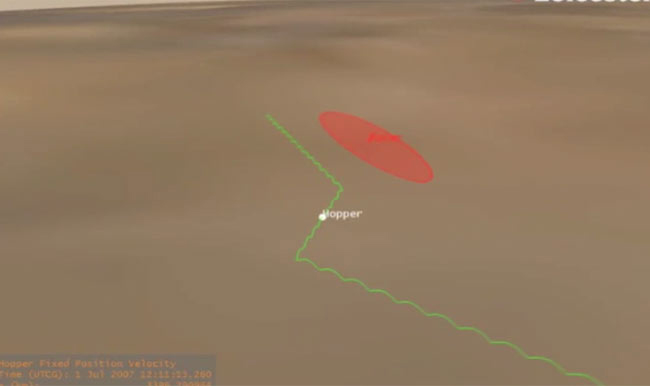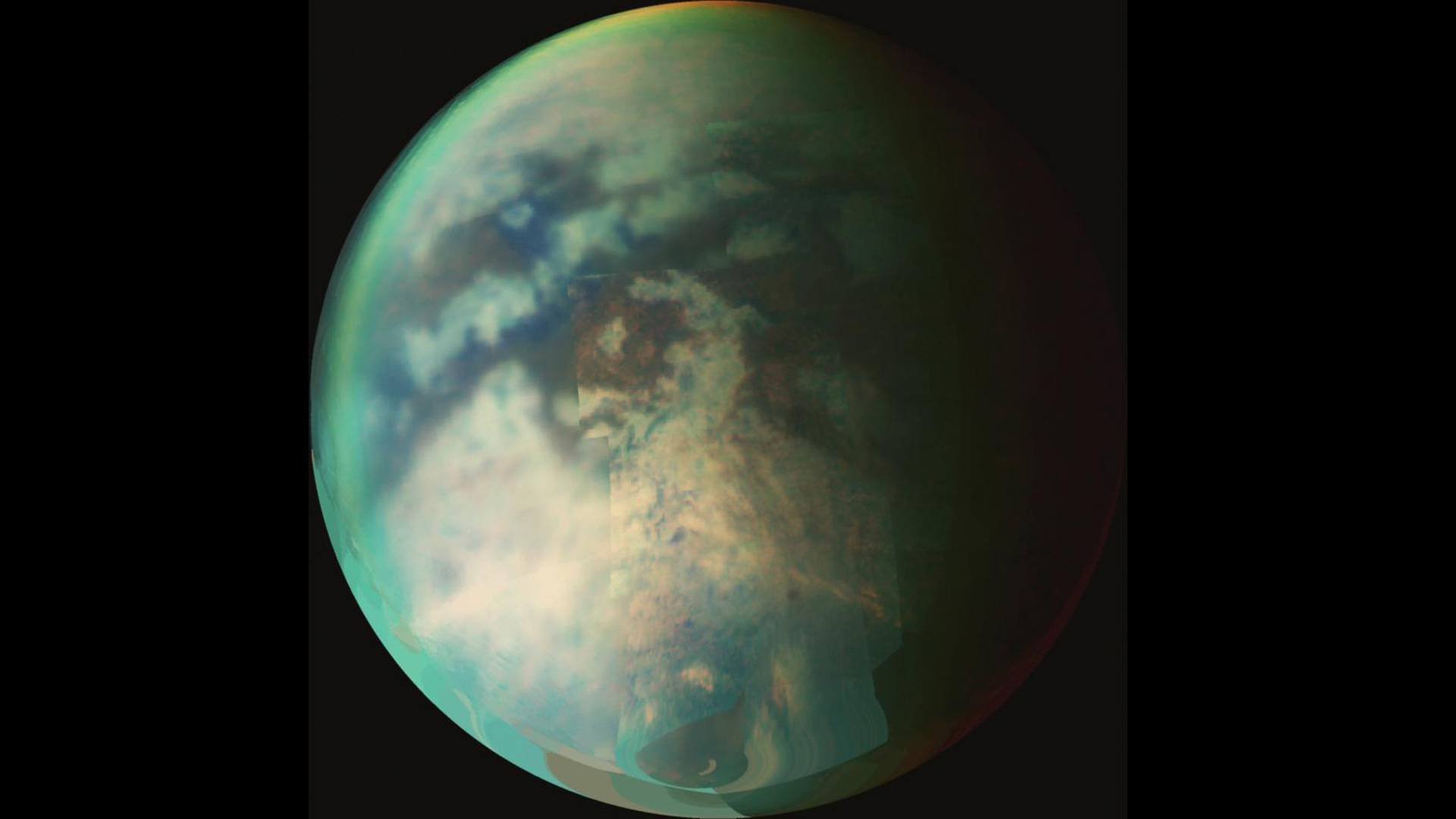Radioactivity Could Power Hopping Robots on Mars

Hopping rockets powered by radioactive material could helprobots leap across the surface of Mars, scientists now suggest.
For decades, wheeled rovers have made extraordinarydiscoveries on Mars, despite exploring only a tiny fraction of the planet.Rugged Martian terrain is often an overwhelming challenge for them, with cliffsand craters blocking their missions.
Instead, scientists are exploring rocket-propelled hoppingvehicles that can wander places wheeled rovers only dream of going.The idea is to blast gas from the Martian atmosphere out in jets for thrust.
A number of ideas for Martian hoppers have been floated, allof which face the challenge of needing a lot of energy and low weight to hopuseful distances. One concept from NASA scientists is to use asolar-powered vehicle that splits the carbon dioxide abundant in theMartian atmosphere into oxygen and carbon monoxide, which it could then burn asfuel in conventional rockets. Chinese researchers also explored the notion ofusing electricity from batteries to suck in and heat carbon dioxide, while aFrench team suggested bringing along magnesium powder as fuel for a limitednumber of jumps.
Now scientists in England suggest using radioactive isotopesto help squeeze gas into thrusters and heat it up for propulsion. Such a hopper couldstudy hundreds of locations across Mars over several years, they calculated.
Radioactive isotopes have been used to power spacecraft fordecades ? radioisotope thermoelectric generators (RTGs) that convert the heatfrom such materials as plutonium into electricity have found use in NASA'sPioneer, Voyager, Galileo, Ulysses, Cassini and New Horizons spacecraft becausethey can generate power with relatively little weight. [Video:Hopping Mars Spacecraft Bounces Around Red Planet]
"Radioisotope power sources have been launched as partof spacecraft numerous times," said researcher Hugo Williams, an aerospaceengineer at the University of Leicester in England.
Breaking space news, the latest updates on rocket launches, skywatching events and more!
Now the researchers, in collaboration with Paris-based spacemanufacturer Astrium, a subsidiary of the the European Aeronautic Defence andSpace Co. (EADS), and the Center for Space Nuclear Research at the IdahoNational Laboratory, suggest radioisotopes could power the devices that bothcompress atmospheric carbon dioxide into a liquid and heat it up as apropellant.
"As with any safety-critical engineering system,including ground-based nuclear power, safety is a primary design driver and anynuclear activity is tightly regulated," Williams said. "A hopperwould draw on these experiences and design standards and would be subject to anextensive test program to demonstrate compliance with safetyrequirements."
The main advantage of using such a power source instead ofconventional batteries is that it could yield more energy over time. It alsowould not need to remain in areas of Mars with plenty of sunlight assolar-powered designs would, and would not have to carry fuel all the way toMars.
"Because the vehicle can collect propellant in-situfrom the atmosphere, it has the potential to have a very long life, andtherefore visit many sites of interest," Williams told SPACE.com.
At the very least, the researchers found such a hopper couldfly in 0.6-mile (1 kilometer) hops. If they use high-performance ceramics suchas boron carbide, they could achieve even greater distances by heating the gasup to 2,780 degrees Fahrenheit (1,525 degrees Celsius) or so.
"Extending the hop range depends essentially oncarrying more propellant, less mass and selecting an optimum mass for the core? this means saving mass, where possible, on components and perhaps reducingthe number of scientific instruments carried," said researcher RichardAmbrosi, a space scientist at the University of Leicester. "There is avery interesting compromise between flight range, how frequently you want toland to take measurements, and how many instruments you take. This is a primeexample of where discussion between many organizations will be necessary tocome to the best solution to match specific science requirements."
The researchers envision a hopper about 10 feet (3 meters)across and about 880 pounds (400 kilograms) in mass.
"Between flights, the vehicle will be re-heating thecore, compressing carbon dioxide to fill the propellant tank and conductingscience experiments," said researcher Nigel Bannister, a space scientistat the University of Leicester. "A week is a reasonable initial estimatefor this turnaround, but in a final design the compression system could bedesigned so the refueling time is similar to the expected duration of scienceexperiments."
The scientists detailed their findings online Nov. 17 in thejournal Proceedings of the Royal Society A.
- Video ? Hopping Mars Spacecraft Bounces Around Red Planet
- 6 Hard Facts About NASA's Next Mars Rover, Graphic
- Designers of Hopping Spacecraft Hope to Win Private Moon Race

Charles Q. Choi is a contributing writer for Space.com and Live Science. He covers all things human origins and astronomy as well as physics, animals and general science topics. Charles has a Master of Arts degree from the University of Missouri-Columbia, School of Journalism and a Bachelor of Arts degree from the University of South Florida. Charles has visited every continent on Earth, drinking rancid yak butter tea in Lhasa, snorkeling with sea lions in the Galapagos and even climbing an iceberg in Antarctica. Visit him at http://www.sciwriter.us
